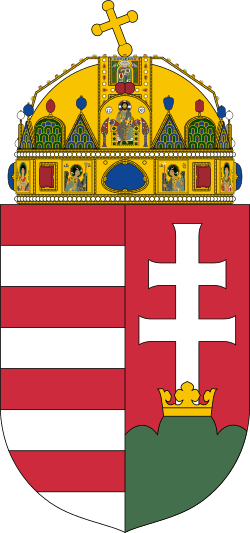Coat of Arms of Hungary facts for kids
The coat of arms of Hungary was adopted on 3 July 1990, after the end of the communist rule, although it has been used before, both with and without the Holy Crown of Hungary, sometimes as part of a larger, more complex coat of arms, and many of its elements date back to the Middle Ages. It has four red and white stripes. Traditionally, the silver stripes represent four rivers: Duna (Danube), Tisza, Dráva, and Száva. It is an white double cross on a red shield, inside a small golden crown, the crown is on the middle heap of three green hills, representing the mountain ranges Tatra, Mátra, and Fátra (made up of the Veľká Fatra and Malá Fatra ranges).
Related pages
Images for kids
-
Arms of Hungary on the 1890 Austro-Hungarian forint coin; the right version adds the arms of Fiume
See also
 In Spanish: Escudo de Hungría para niños
In Spanish: Escudo de Hungría para niños




